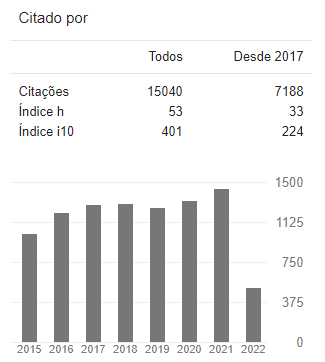Relationship between risk behaviors for eating disorders and maturational process in young athletes
DOI:
https://doi.org/10.12820/rbafs.v.17n5p383-395Palavras-chave:
Eating behavior, Eating disorders, Athletes.Resumo
The aim of the study was to analyze the relationship between risk behavior for eating disorders (ED) and maturational process, according to sex. 580 athletes, of both genders, aged between 10 and 19 years participated of the study. ED was assessed by the Eating Attitudes Test (EAT-26). We applied the Body Shape Questionnaire (BSQ) to assess body dissatisfaction. Sitting-height, height and weight were measured to estimate the age of somatic maturation. Sexual maturation was assessed by the criteria of “Tanner”. Results showed prevalence of 18,1 and 14,7% of behavior for ED in girls and boys, respectively. There was no difference in the EAT-26 scores as a function of maturational stages, but this score was associated with maturational stages in males (p <0.05). Finally, the interaction between somatic and sexual maturation significantly influenced the EAT-26 score in both the female and male gender (p<0.05). Moreover, we found significant differences in the proportions of the BSQ ratings in both sexes (p<0.05). We conclude that the maturational process exerted little influence on the behavior of ED, and this relationship was observed only in male athletes. Thus, it appears that male athletes with more advanced biological ages are better protected against ED. However, female athletes appear to be at greater risk for such behaviors, regardless of maturational period in which they are.Downloads
Não há dados estatísticos.
Downloads
Publicado
2013-04-03
Como Citar
1.
Fortes L de S, Conti MA, Ferreira MEC. Relationship between risk behaviors for eating disorders and maturational process in young athletes. Rev. Bras. Ativ. Fís. Saúde [Internet]. 3º de abril de 2013 [citado 16º de abril de 2024];17(5):383-95. Disponível em: https://rbafs.org.br/RBAFS/article/view/2179
Edição
Seção
Artigos Originais










